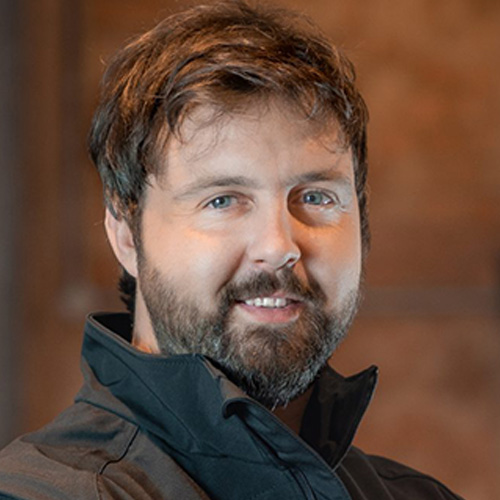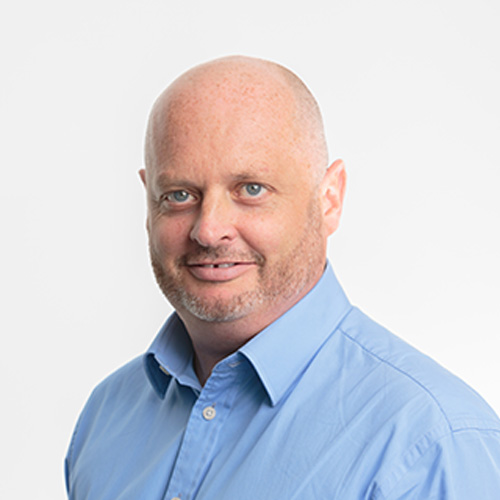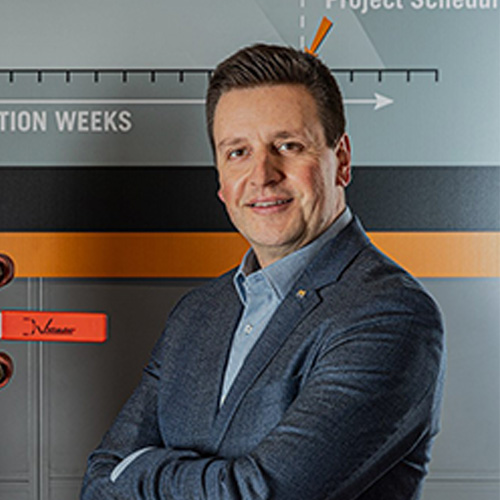We speak to experts from VIRTUS, XYZ Reality and Victaulic about how operators and C-levels should adapt data centre construction strategies in an era of investment, larger compute demands and talent shortages.
According to research from Linesight, the construction industry was harmed by the steep hikes in interest rates over 2023, but is expected to rebound in the second half of 2024, benefitting from investment in key sectors such as data centres, life sciences and high-tech manufacturing.
“The increasing demand for cloud services, growth of data-intensive applications such as AI and the need for reliable and secure data storage are driving factors in the expansion of the data centre market in the UK and across Europe,” said Michael Riordan Managing Director, UK at Linesight.
The research, Construction Market Insights for Europe, also notes AI demand increasing rack density, impacting HVAC and air cooling. FLAP-D markets continue to be the preferred location, witnessing increases in capacity despite challenges related to power availability and increasing regulations around sustainability. There is also a growing focus on new locations within these countries. With ample availability of renewable power, Nordic countries are emerging as preferred data centre investment areas.
All industries are dealing with specialist and skilled worker shortages, however, the data centre sector seems to be in no rush to invest the resources or increase longer-term retention of current staff and development of new staff, as Uptime Institute found.
Alongside the lack of urgency to encourage a new workforce generation is the availability of power in popular regions. Secondary markets are benefitting from this ‘spillover’, as operators are choosing to set up hubs with less friction with power and land. JLL reported that cities like Berlin, Madrid, and Stockholm are just a few to benefit from nearby mature data centre markets. These power issues are also encouraging alternative energy options, as the research noted, SK Ecoplant and Lumcloon Energy are reportedly planning a new data centre in Ireland that will rely on gas-powered fuel cells rather than a grid connection.
Following on from power, as governments impose energy consumption restrictions for data centre development in certain regions, they are actively working towards supporting the growth of the sector by deploying funds and upgrading infrastructure. For instance, the EU is drafting plans to invest €584 billion to upgrade power grids, and the Dutch government is contributing €70 million to support projects like modular data centres.
Another factor influencing the sector is the surge in demand from AI contribution, which is having implications on the design, construction and cost of data centres. Building Edge data centres, while serving the community and end-users effectively, presents unique requirements and adoption obstacles. As mentioned by Linesight, these sites will require significant infrastructure investment to equip the new power-hungry compute and support corresponding cooling necessities.
The data centre industry has proved its robustness amidst a turbulent transition period, but it’s time to start preparing facilities for the next generation.
David Mitchell, Founder and CEO, XYZ Reality

Operating at the intersection of groundbreaking technologies and mission-critical construction means we have a unique vantage point to understand and anticipate the future evolution of AI technologies and their impact on data centre design.
Already, AI is revolutionising data centre design in transformative ways and it’s fast becoming a catalyst for building more efficient, resilient and adaptive data centres. The first significant impact is its power to optimise the design and construction process. AI-driven tools will enable us to identify the most efficient design configurations, predict potential points of failure and optimise resource allocation. This means data centres can be constructed faster, with fewer errors, lower costs and reduced carbon footprint.
We see it all around us. Our clients are unlocking remarkable benefits by integrating AI into their data centre operations and during commissioning. Equally exciting is how AI is transforming data centre construction. By refining data management and its use in the field, project timelines are shrinking and resource management is becoming more effective.
AI-driven solutions streamline portfolio-level data management, allowing for precise scheduling information and effective 4D model management. These capabilities enhance planning and forecasting accuracy, ensuring that every aspect of construction is meticulously planned and executed. The ability to manage and query large datasets in real-time leads to better decision-making and coordination among teams – even when they are dispersed geographically. This results in a seamless and efficient construction process, reducing delays and minimising errors.
By significantly cutting down construction time and minimising rework and errors, AI makes the construction phase more efficient and environmentally friendly. Faster project completion reduces the energy consumption and resources needed on-site, while fewer mistakes mean less material waste and lower emissions from rework. This not only helps data centres achieve their sustainability goals but also contributes to a greener, more sustainable construction industry.
XYZ Reality is priming our hyperscale partners to change the game of data centre construction, leveraging our expertise to support the development of next-generation data centres that meet the growing demands of our digital world. Seeing our clients innovate how they build these economic workhorses is empowering the industry to build smarter, more resilient and environmentally responsible data centres is an exciting prospect.
David Watkins, Solutions Director, VIRTUS Data Centres

This boom in Artificial Intelligence (AI) and Machine Learning (ML), coupled with continued growth in cloud and enterprise workloads, is causing a re-evaluation of data centre construction strategies because of the additional amounts of compute power required. If AI is to reach its potential, various challenges need to be overcome. These include managing sustainable power at scale and implementing designs that support rapid and scalable AI deployments, whilst aligning with values that benefit the data centre provider, the customer and wider societal responsibilities.
Many current European data centres simply cannot meet the short-term demands of AI due to a shortage of infrastructure that can support HPC workloads and some central metropolitan areas being power-constrained. Ideally, new facilities should be built at scale, located close to, but not necessarily in a major European metropolitan city (AI/ML workloads are often less latency sensitive) and supplied with renewable energy. As a result, data centre providers are looking to build AI-ready facilities, redefining scalability with the strategic development of AI-ready megascale campuses which are likely to have a capacity of 200-500MW.
Sustainability continues to be a key factor and there needs to be a balance between making facilities green without compromising operations and reliability, whilst enabling AI to reach its potential.
Beyond the megascale campuses, the role of Edge Computing remains important. As companies adopt AI/ML strategies, the demand for Edge solutions becomes more pronounced. A fully integrated AI solution requires connectivity to all aspects of a business’s systems. While core language models and inference models may reside in megascale campuses, there is an ongoing need for Edge solutions in metropolitan cities, ensuring full integration.
VIRTUS is currently embarking on pan-European growth. We are already building a 260MW campus in Berlin, whilst we continue to explore the construction of large-scale campuses in other European locations. It is important to attract and retain high-quality operational staff to these new locations, which can be a challenge in a (sometimes considered) niche technical environment, which historically hasn’t been at the forefront of promoting itself as a career option to those outside of the sector. Many other industries have individuals whose skillsets could be easily adapted to the data centre industry, so the industry must promote itself as a dynamic and growth environment to attract talent.
Branden Kotyk, Vice President and General Manager EMEA, Victaulic

We are currently witnessing a surge in data centre construction – a trend driven by the rapid adoption of AI, which demands large data centres to handle the growing volume and complexity of data processing. Additionally, there is a rising need for smaller Edge data centres to process information locally, reducing latency in applications including 5G networks, factory automation, smart grids and potentially, future self-driving cars. This boom is increasing demand for Victaulic’s expertise in pipe joining and fire protection solutions, which are essential for both cooling and protecting the valuable, high-heat-generating assets within these facilities.
The main challenges include meeting the required construction speed, overcoming skilled labour shortages, controlling costs and ensuring sustainability. Victaulic technology addresses all these issues. It’s cold, clean and safe compared to welded or flanged joints. Instead of welding pipes together – a process that requires highly skilled labour, is time-intensive, consumes a lot of energy and generates fumes and waste – we use an innovative mechanical method. In this approach, the ends of the pipes are simply grooved, and a coupling joins them together, fastened by two bolts.
Our team can train anyone to install the couplings correctly and reliably, and they can be installed up to 10x faster than welded joints. Additionally, any adjustments required to expand the piping system are much easier with grooved mechanical pipe joining than with welding, avoiding costly delays and waste. Prefabricating piping sections in our factories further accelerates installation on projects with large and complex piping systems, such as data centres, by simplifying logistics and reducing the amount of work required on-site.
The Victaulic method also contributes to project sustainability by eliminating energy and material consumption and fumes during installation. Our couplings are made from up to 98% recycled content using electric induction, which emits 85% less CO2 per ton compared to traditional furnaces. Moreover, they can be easily removed without damage to the coupling or pipe by simply unfastening the bolts, allowing them to be reused in infinitely reconfigured or expanded piping systems as requirements evolve or recycled if no longer needed. This means our products adapt to changing needs as opposed to the ‘one-time use’ traditionally joined systems.
In a nutshell, deploying Victaulic’s grooved mechanical pipe joining technology is an ideal strategy to meet the growing demands of centralised and Edge data centres. Our proven solutions ensure that we can support the rapid expansion of data infrastructure necessary for modern applications, from AI to 5G networks, facilitating economic recovery and technological advancement in an efficient, cost-effective and sustainable manner.



